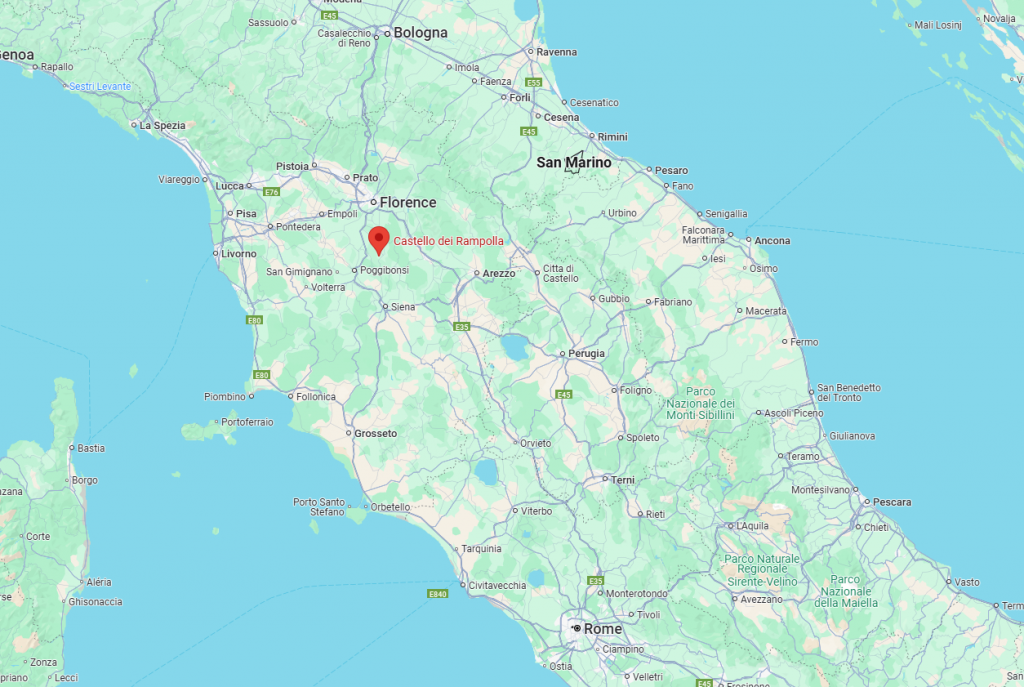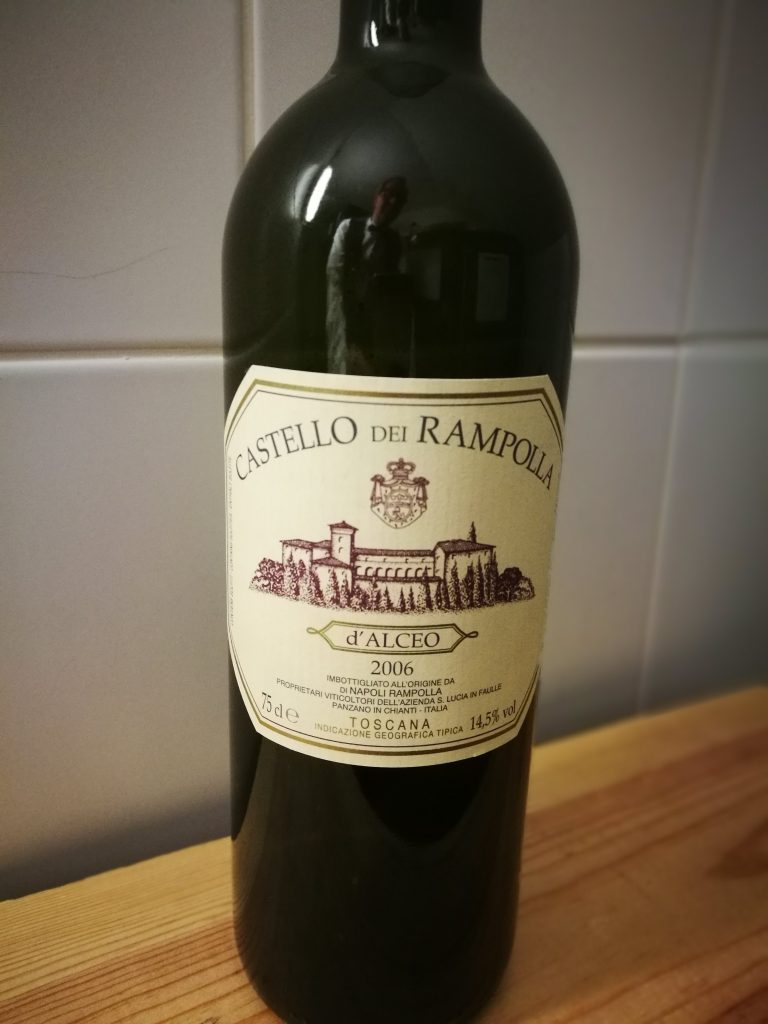Situated in the centre of the Chianti Classico region of Tuscany, Castello dei Rampolla is more than just a winery; it is an example of the dedication and unwavering craftsmanship that characterise outstanding winemaking. Alceo di Napoli founded this estate in 1965, and it has since grown to become a shining example for people looking for wines that skilfully blend sustainability, innovation, and history. The mediaeval cellars of Castello dei Rampolla, where elegance is not only a goal but a practiced art, are at the centre of this business.

A Heritage Stemming from Tradition
Castello dei Rampolla’s tale starts with a vision: to make wines that honour the land and showcase Tuscany’s distinctive terroir. The estate, which is located in Panzano in the Conca d’Oro (also known as the “Golden Basin“), has a special microclimate and soils that are rich in limestone, making it ideal for cultivating Sangiovese and other types. World-renowned wines like Sammarco and d’Alceo, which are praised for their depth, complexity, and elegance, have been added to the estate’s repertoire over the years.
The foundation of Castello dei Rampolla’s winemaking process is its historic cellars, which are located beneath the estate’s old buildings.
These cellars are a sanctuary where wine develops into its greatest expression, influenced by the interaction of time, temperature, and skill. They are not just places to store wine.
The Architecture of Style
Entering Castello dei Rampolla’s cellars is like travelling back in time. An atmosphere of reverence and subdued expectancy is created by the chilly stone walls, towering ceilings, and softly illuminated hallways. The cellars were carefully planned to preserve a steady, organically controlled atmosphere that is perfect for wine ageing. The high humidity and mild temperatures guarantee that the wines mature naturally, unhindered by external factors.
The walls are lined with wooden barrels, their oak staves infused with the perfume of wine that has aged. These barrels are essential to the winemaking process and come from carefully chosen cooperages. Every barrel is picked to enhance the personality of the wine it contains, adding delicate hints of toast, spice, or vanilla without dominating the inherent traits of the fruit.
Biological Activity in the Cellar
Biodynamic farming, which encompasses the grapevine to the cellar, was pioneered by Castello dei Rampolla. According to biodynamics, the vineyard is a living thing that should be in balance with the cycles and rhythms of nature. This idea translates into minimal intervention winemaking in the cellars.
The distinctive character of the estate’s terroir is preserved by employing natural yeasts during fermentations. Instead of using harsh mechanical methods that can degrade wine quality, gravity flow systems are used to transfer the wine softly. The wines are kept as pure and expressive as possible by using as little sulphite as feasible.
The Cellars Give Birth to Signature Wines
The time spent in the cellars gives Sammarco and d’Alceo, two of the estate’s most renowned wines, a lot of their character.
Sammarco: This elegant and well-structured wine is a mix of Cabernet Sauvignon, Sangiovese, and Merlot. It is aged in French oak barrels for 12 to 18 months, developing layers of tobacco, spice, and black fruit that are counterbalanced by fine-grained tannins.
d’Alceo: This wine honours the estate’s founder and bears his name. Made mostly from Cabernet Sauvignon and Petit Verdot, d’Alceo is a powerful, luxurious wine that can be aged in oak barrels for up to two years.
A silky texture and a symphony of flavours, from blackcurrant to cedar and liquorice, are imparted by its time in the cellar. A fundamental component of Castello dei Rampolla’s winemaking strategy is patience. After being bottled, the wines frequently age in the cellars for a longer period to make sure they are prepared to satisfy discriminating palates when they are released. The wines of Castello dei Rampolla are elevated from good to exceptional by this attention to detail and time.
The Tasting notes

2006 d’Alceo
The d’Alceo 2006 is enormous. A wine for the future, the 2006 is still tannic, strong, and brooding. The 2006 has stunning balance, lovely interior perfume, and remarkable depth. The 2006 continues to be powerful and muscular at its core, but it begins to develop a little with time in the glass. The final notes are loaded with cloves, mint, plums, and sweet floral notes. Another Rampolla epic d’Alceo that perfectly encapsulates one of the greatest Tuscan vintages ever is this one. 94 corked Points